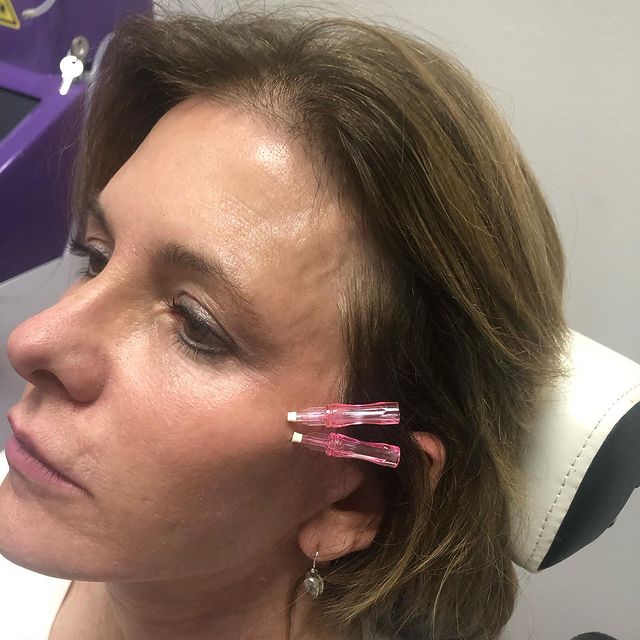
Each patient's surgical outcome will vary. Some patients may experience discomfort following surgery. This could include soreness or bruising to the face. For several weeks, the mouth may feel stiff. The results are not guaranteed and may require a second procedure. Patients are advised to avoid smoking, drinking, alcohol, face down sleeping, and excessive movement for at least a week following their procedure. Health insurance does not typically cover jaw implant procedures, so the cost is typically the responsibility of the patient.
Chin augmentation
A chin augmentation procedure takes about an hour. It is performed with general or local anesthesia. The chin implant will be inserted in front of the jawbone. There are sutures used to close this incision. The procedure is painless and quick. After a week, most patients are able to return to work or their homes. In some cases, a patient will not be able to have an incision inside their mouth, in which case the surgeon can make an incision on the skin beneath the chin. There is no visible scarring left after the procedure.
The cost of a chin augmentation depends on several factors. One important factor is the level and expertise of the surgeon. The more experienced a surgeon is, the more likely they are to produce an excellent result. An experienced surgeon might make more mistakes and be at greater risk of complications. It is always a good idea for patients to see before and afterwards photos of surgeons' work.
Angle augmentation
Jaw angle augmentation improves facial proportions and balance by augmenting the jaw. This procedure can be done with either fillers, or jaw implants. The fillers can be removed quickly if they are not comfortable. However, jaw angle implants may provide instant volume enhancement. However, this procedure will require surgery.

The most important aspect of the procedure is choosing the right style of jaw angle implant. The surgeon can determine the right angle by using x-rays or a clinical exam. The surgeon should be able to see the patient's ideal jaw line. This is especially important when using titanium implants because the procedure is an all-or-nothing affair.
Cheek augmentation
The cost of cheek augmentation with jaw implants can vary widely depending on the surgeon and the procedure itself. Some surgeons charge a set fee for cheek implants, while others may have flexible payment plans and offer financing options. When deciding whether or not to have this procedure, it is important to consider the credentials of the surgeon.
Cosmetic surgeons often use implants or fat grafting to enhance the shape of the face. A patient will either be anesthesized with general anesthesia or localized anesthesia. The plastic surgeon will evaluate the medical history of the patient and recommend the best treatment.
Implant Chin
A chin implant procedure is a common cosmetic surgery that improves the appearance of the chin. It usually takes about 30 minutes. You can choose to have it done under local anesthesia, general anesthesia, or sedation. Patients are usually able to resume their daily activities the next day with minimal downtime. Some swelling and pain may occur after the procedure. However, this should disappear in a few days. Pain medication and cold compresses can help minimize the pain.
There are several types of implant options. Most popular are silicone implants. These are flexible and flexible, and can be adjusted easily by the surgeon. Although porous polyethylene implants can be more rigid and integrate better with surrounding tissue, they are also more expensive. Based on the pros and cons, your surgeon will decide which type of implant is best for you.

Implantation of jaw
A board-certified surgeon is recommended if you are thinking about jaw implant surgery. Before you make a decision on a doctor for your jaw implants, it is important to meet with them. The American Society of Plastic Surgeons' tool "Find a Surgeon", can help you find a surgeon who has been board-certified.
Implants are made of silicone or other synthetic materials. They are shaped to match your jawline, and attach with two- to three titanium screws. An incision will be made at the corner, usually below the chin. The incision will be closed in layers and the implant will be inserted. The wound is sealed with a watertight seal to prevent any liquid from getting into it. The entire procedure usually lasts one to two hours.